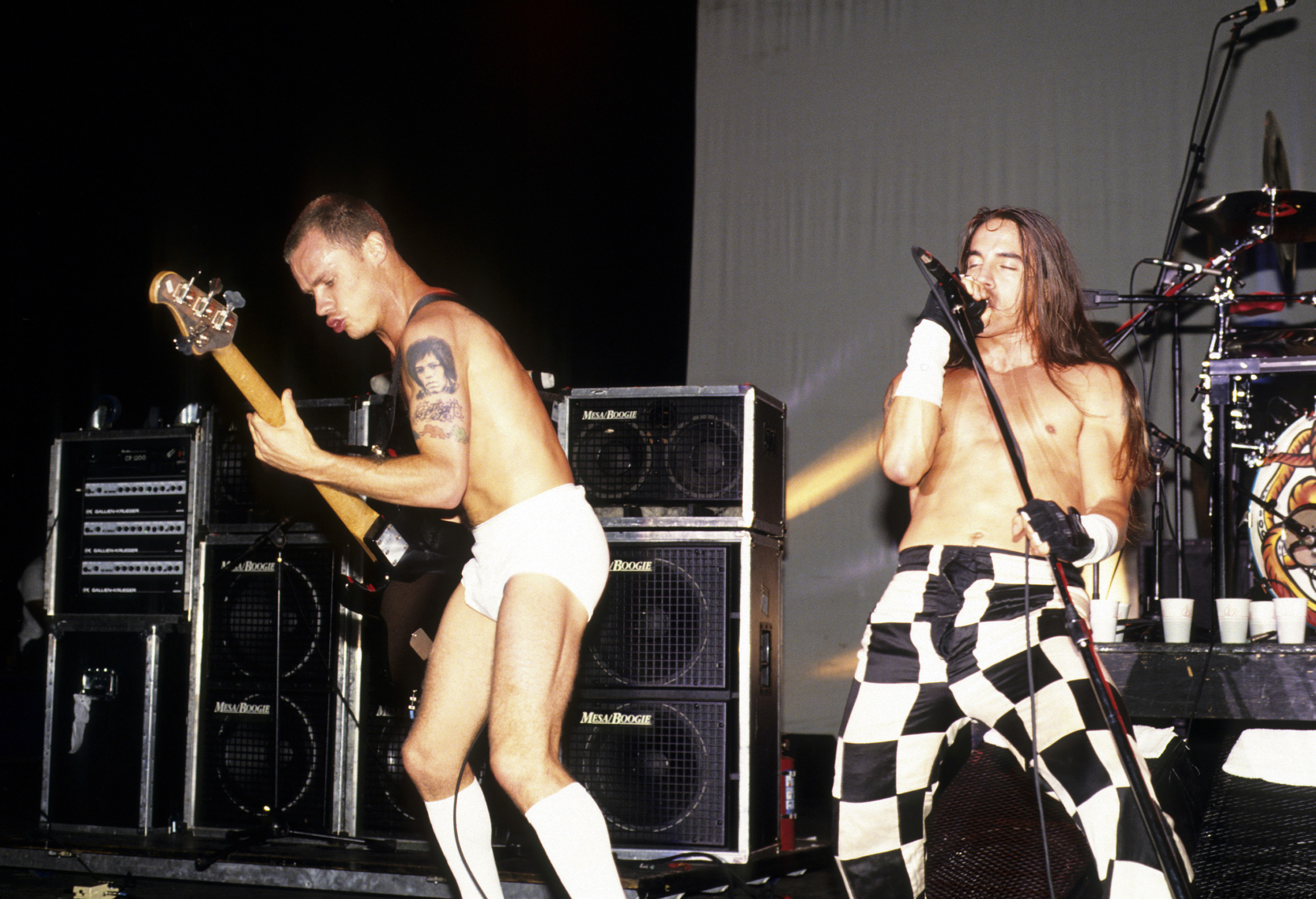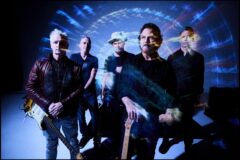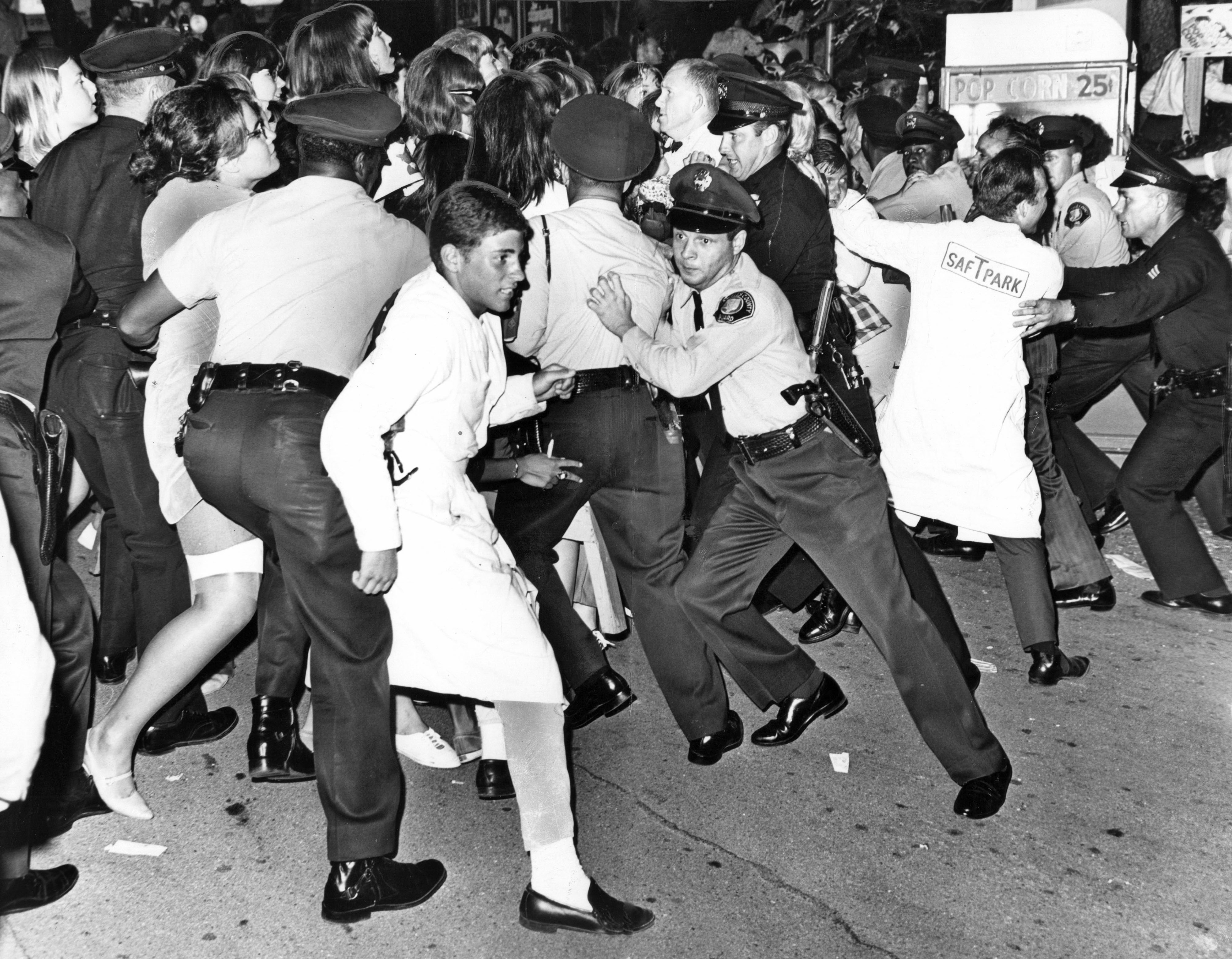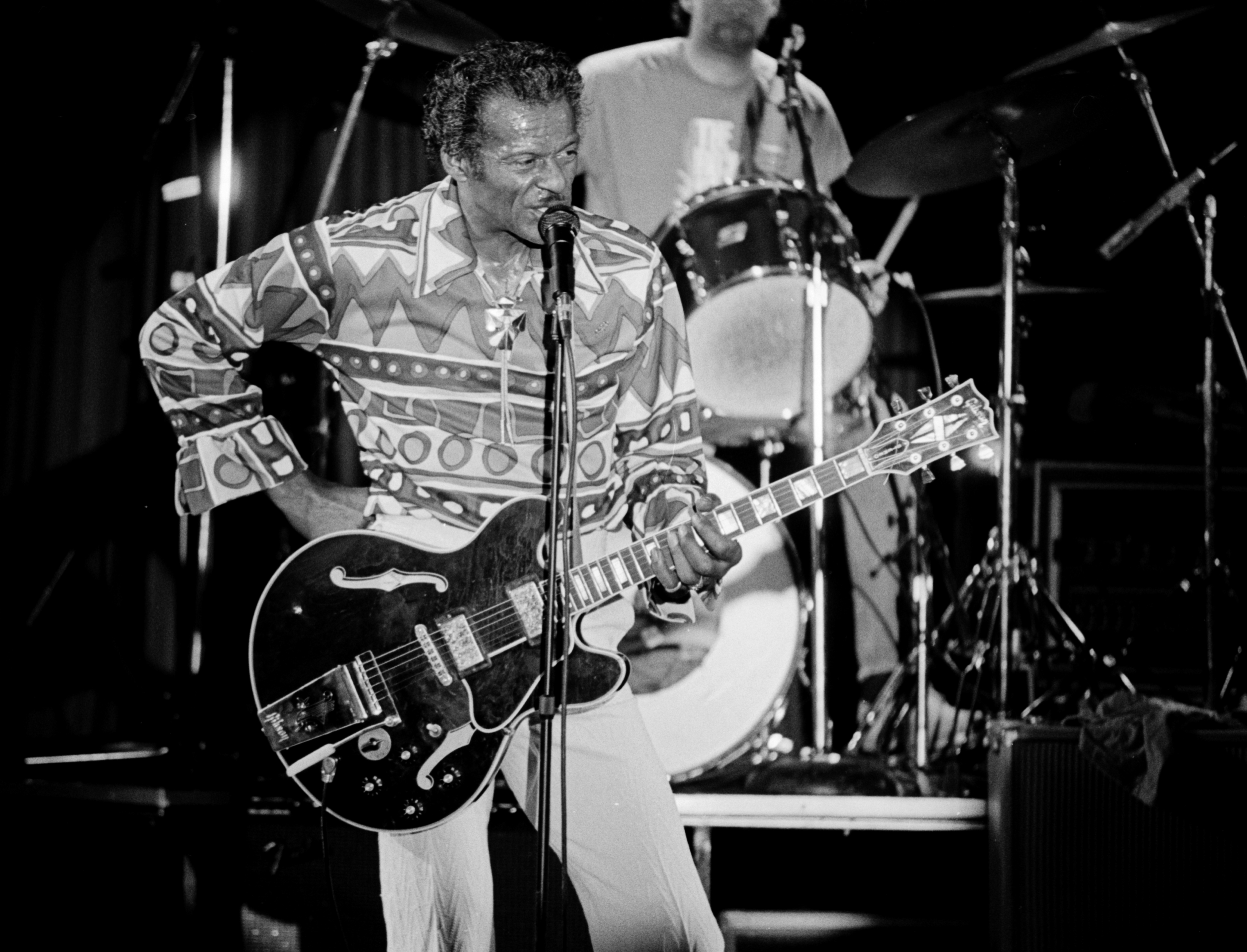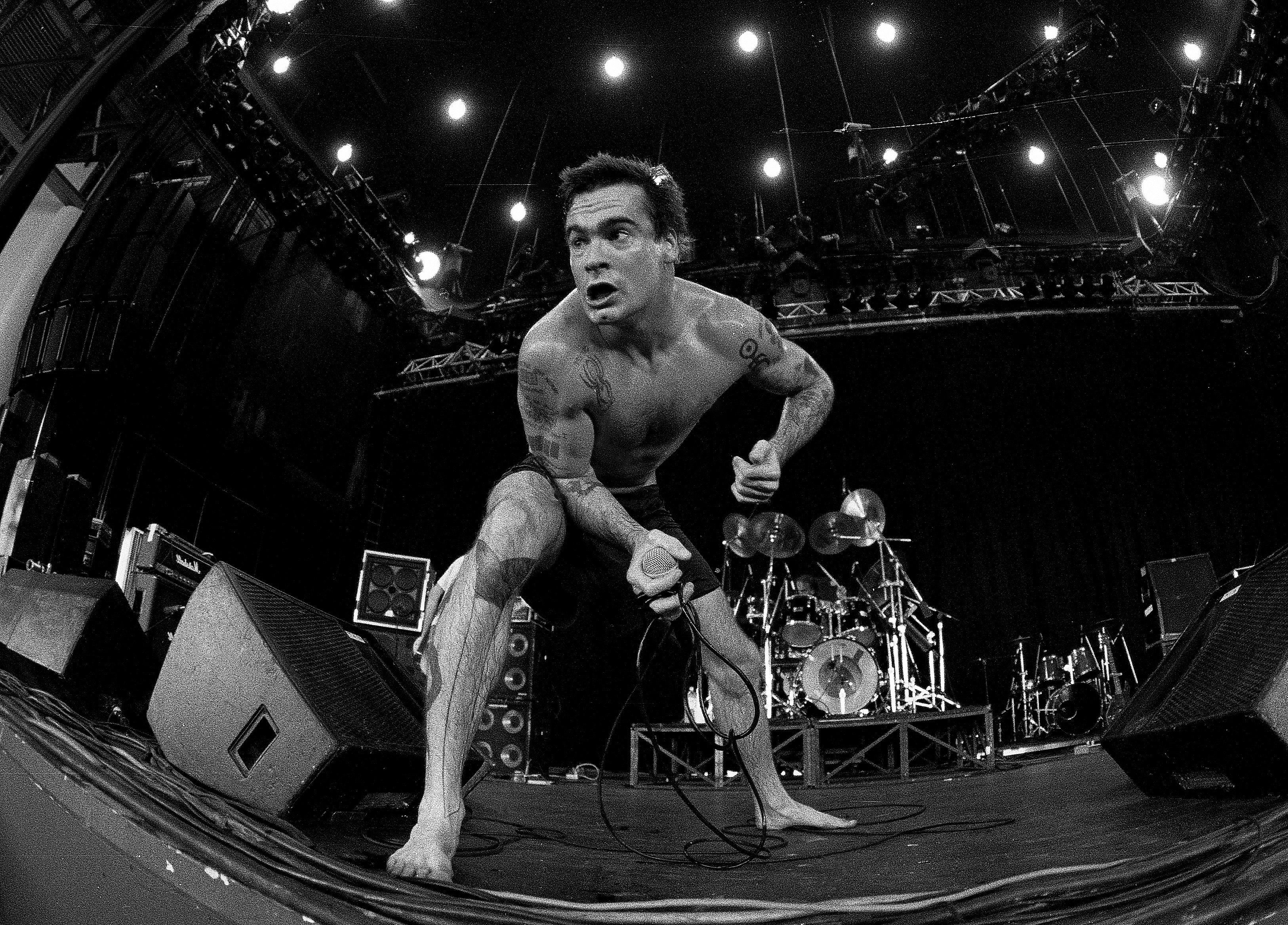This article originally appeared in the July 2001 issue of SPIN.
Live performance predates recorded music by, well, about 3 million years. But we had our hands full just looking through the past 50 to find the most important tours in pop music. Can a rock concert change the world? Yes. For the better? Not necessarily.
1. Various Artists
Lollapalooza, 1991-1997
The first year I went to Lollapalooza, I thought about salvation. Was alternative rock, this thing being invented before my eyes and ears, saving us? Or did we need to be saved from it? “When people smell that they can potentially make a lot of money, doors open,” explains Jane’s Addiction frontman Perry Farrell, who cofounded the festival in 1991 with his manager, Ted Gardner, and booking agent Marc Gieger. “I don’t necessarily think that’s a bad thing.”
Crystallizing the tension between healthy growth and exploitation, Lollapalooza uprooted and transformed rock’s underground. The first year, which featured Jane’s Addiction, Siouxsie and the Banshees, Living Colour, Nine Inch Nails, Fishbone, Violent Femmes, Ice T and Body Count, Butthole Surfers, and the Rollins Band, was chaotic. “Everybody was flying by the seat of their pants,” says Farrell. “the very first day we played, I got into a full-on brawl with Dave Navarro.”
Mostly, though, the commotion was healthy, and the festival quickly evolved from bright idea to institution. “I remember it coming together,” recalls Thurston Moore, who headlined ’96 with Sonic Youth. “They’re were selling out outdoor spaces and every kid was going to it. All of a sudden, here was this demographic that was not being counted in the industry sense.”
In ’92, my first Lollapalooza, I wasn’t sure I wanted to be part of a demographic. I feared the jocks screaming for the Red Hot Chili Peppers and the dudes yelling “Faggot!” at the people manning the ACT UP table. But for every instance of countercultural malaise, I found a hopeful sign. While Ice Cube got mostly ignored on the main stage, Samoan rappers Boo-Yah T.R.I.B.E. on the second stage drew a throng. The vendors overcharged for water and falafel, but anyone could bang on the Rhythm Beast—a scrap-metal percussion sculpture—for free. Lush were kind of tired, but nothing could have been fresher than Farrell debuting his new band, Porno for Pyros, in a surprise afternoon set also on the second stage. Offering up relative unknowns like Tool, Moby, Luscious Jackson, and Ben Folds Five over the years, the second stage was in a way the heart of Lollapalooza.
But there were plenty of milestones on the main stage. Temple of the Dog, the short-lived Soundgarden/Pearl Jam hybrid, played some of their few dates on the 1992 tour. 1993 saw Rage Against the Machine stage their famous anti-censorship protest, standing naked with mouths taped, in Philadelphia. George Clinton and the P-Funk Allstars taught a new generation to funk in 1994: Pavement, Sonic Youth, and Moby made magic in 1995, and even in 1996, the metal-heavy “bad” year, the Ramones rocked some of their last shows, reminding us where all this chaos came from.
As the ’90s rolled on, skepticism about the festival intensified. When the decidedly non-alt-rock Metallica headlined in 1996, even Farrell questioned its survival, breaking off to start his own rave-flavored, short-lived ENIT fest that year. (“Why didn’t they listen to me?” Farrell laments about the festival’s change in aesthetics. “Maybe because I was a fucked-up drug addict.”) Major label money had come to govern the bill, and the festival game was suddenly crowded with imitators—the Vans Warped tour. Lilith Fair. Smokin’ Grooves. Ozzfest. Even today, virtually every package out there second-guesses Lollapalooza’s success and its mistakes.
Lollapalooza went kaput after 1997, following a laudably forward-looking bill featuring both dance acts (the Prodigy, Orbital) and new metalists (Tool, Korn). Alternative was now part of our cultural DNA. But its originators haven’t despised of the model’s possibilities. Sonic Youth are planning to curate a comparable festival at UCLA this fall. This mini-reprise of Lollapalooza ’91—a.k.a. the Jane’s Addiction farewell tour—has invented Sasha and Digweed and Roni Size to rock this summer’s Jane’s Addiction reunion tour.
Farrell also hopes to stage a jubilee-style festival in Israel soon. “God gave this commandment to Moses and said every 50 years Israel was supposed to celebrate with music, free the slaves, and reapportion land,” he says. “First and foremost, He specified the musical instruments. This is a commandment to party. A conscious party!” At its best Lollapalooza fulfilled this mandate and saved us all—if only for one long day. —ANN POWERS
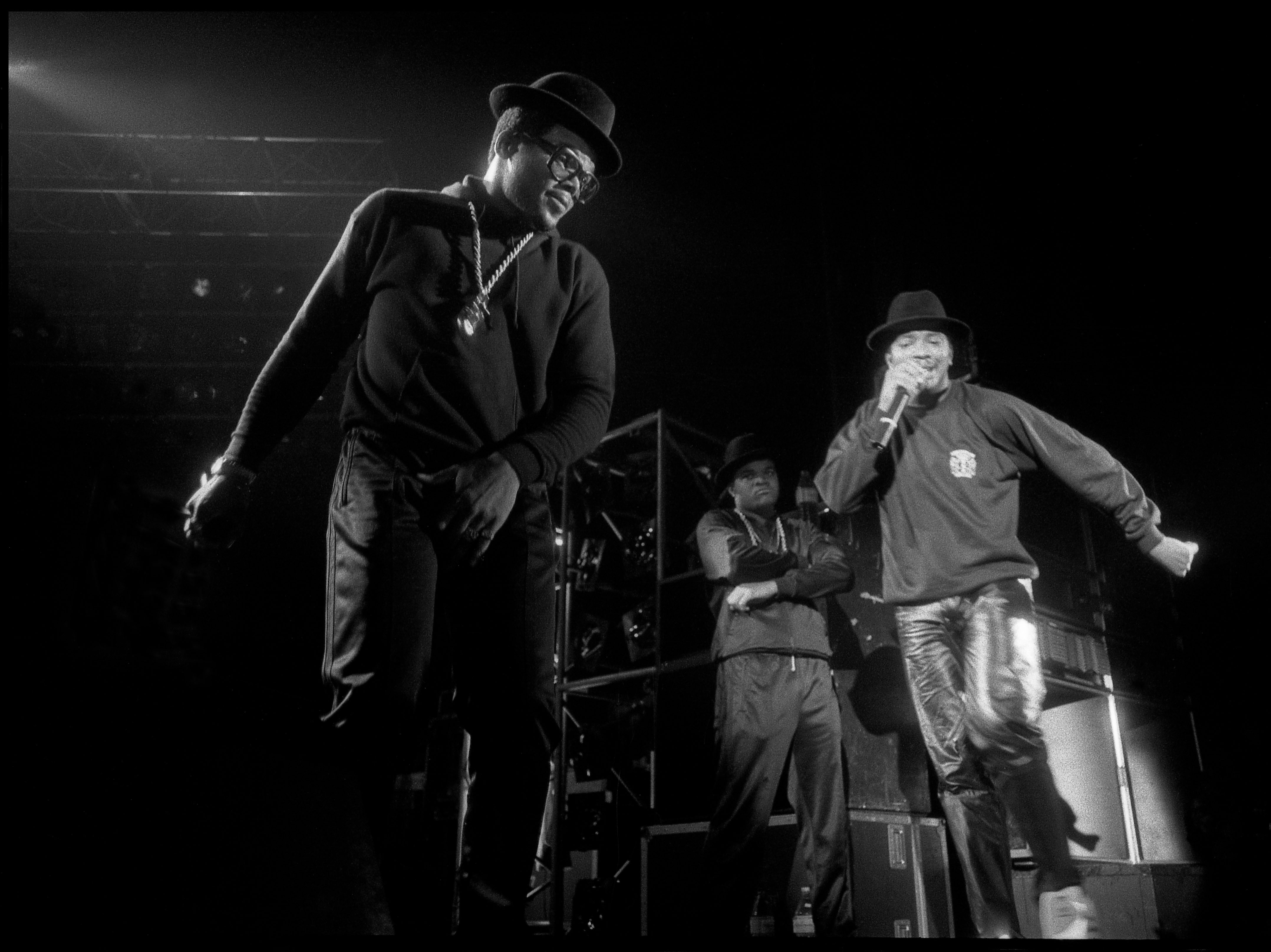
2. Various Artists
Raising Hell tour, 1986
I wasn’t the first big national rap outing, but Raising Hell, featuring Run-D.M.C., Whodini, L.L. Cool J, and openers the Beastie Boys, was the moment when hiphop became the new rock’n’roll. By September 15, 1986, the 15-week, 62-city tour was over, and Run-D.M.C.’s album of the same name was double-platinum. “The Raising Hell tour spearheaded the advance of hip-hop into the white community,” says Bill Adler, then director of publicity for Rush Artist Management and today an unofficial historian of the tour. “It was the end of racial segregation in popular music.”
While Raising Hell crisscrossed America, Run-D.M.C.’s remake of Aerosmith’s “Walk This Way” ruled MTV. “[Def Jam cofounder] Rick Rubin‘s contention was this was rock’n’roll all along,” Adler says. “Remaking ‘Walk This Way’ made the point in an unmistakable way.” The tour was dogged by bad press fomented by post-show arrests in Pittsburgh and New York City. And a gang-related mini-riot on August 17 in Long Beach, California, stopped the show and left 40 people injured. Despite its problems, the tour, in hindsight, established the Beasties (who released Licensed to Ill that November) as legitimate predecessors of one Marshall Mathers. It also celebrated both L.L. Cool J and Whodini in the full flush of their creative primes.
Magazines and newspapers spit out various iterations of the “Rap Gets a Bad Rap” headline and chased down the “Are our children safe?” angle. (Silly, shortsighted periodicals!) The bad press was both bad-meaning-bad and bad-meaning-good for Run-D.M.C. and their costars. Looking back, D.M.C. says, “We overused, we overindulged, and we overtook the music industry.” —SASHA FRERE-JONES
3. The Beatles
U.S. tour, 1965
The Beatles made their second major tour of the States in the summer of 1965, and I was lucky enough to win tickets to one of the shows. It’s the only thing I’ve ever won. I was 14, living in Portland, Oregon, and the concert was at the Memorial Coliseum—a 20,000-seat sports and convention center. There were two, three, maybe four other acts on the bill. Gerry and the Pacemakers? Roy Head? I can’t be sure. So much of that afternoon felt like a fever dream.
At a certain point, a small legion of Portland policemen lined up in front of the stage; I counted roughly 200. The house lights went down, but so many flashbulbs were suddenly going off that you could see the Beatles moving through the darkness onstage. As the spotlights came up, the band vaulted into its first number—but to this day, I couldn’t tell you what it was. The truth is, you couldn’t really hear George Harrison’s witty riffs or Ringo Starr’s bumpy tom rolls; you couldn’t distinguish Paul McCartney’s ecstatic croon from John Lennon’s creative howl. All you could hear was the amassed shriek of the audience. It was a full-throated, uncontained, celebratory, and needy cry, and it never relented for the duration of the half-hour show.
At first, I was annoyed: I wanted to hear the Beatles, wanted to hear current hits like “Help!” and “Ticket to Ride.” After all, if you look at some of the concert footage from that tour or play the now inexplicably out-of-print The Beatles at the Hollywood Bowl album, you realize just how damn good—tight, clever, and dynamic—the band was live. After a few minutes, through, I understood that this wasn’t about hearing great music. It was the gestalt of an experience that genuinely felt like living revelation. At one point, I realized my own voice was screaming along with all the others. But I couldn’t stop it—I felt so full of exhilaration and faith. Nothing has ever matched how overwhelming those moments were, watching those musicians through the flickering luminescence of flashbulbs as they played in the fractional lights of history.
The Beatles’ first U.S. tour in 1964, was more earth-rattling, and their final trek, in 1966—after Lennon boasted that they were bigger than Jesus Christ and the band had grown disillusioned with live performances—was more world-weary. I saw the Beatles during a brief time when kids could still gather and scream and not meet with fear, resentment, and retribution, before everything around us—the music, the culture, the politics—turned into a setting for division and dread. You could scream those days in a shared awareness: that life might be good after all, and if nothing else, you were lucky enough to be living it in a time when the Beatles’ every gesture seemed to illuminate the world. —MIKAL GILMORE
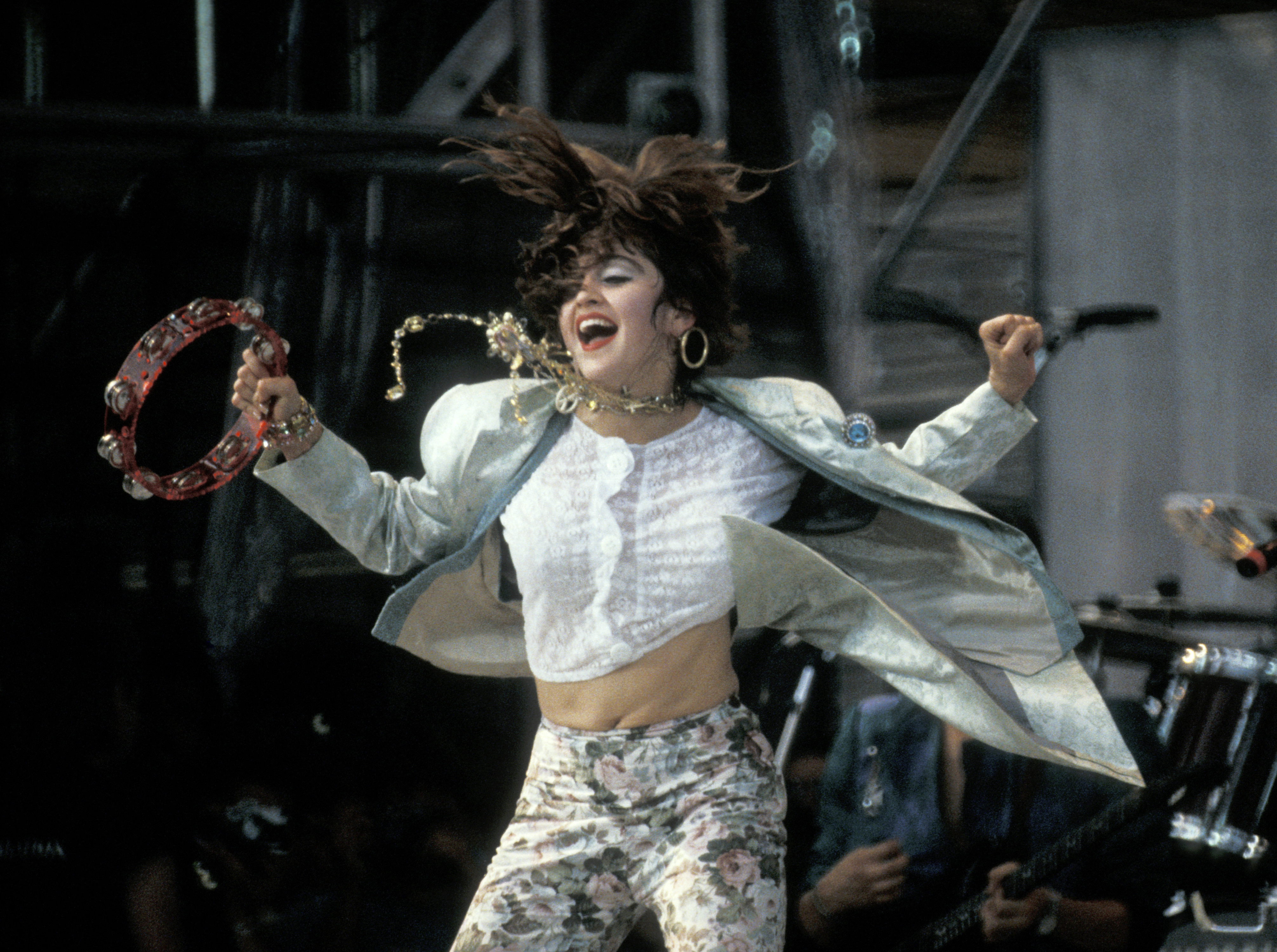
4. Madonna
The Virgin tour, 1985
In 1985, I was a skinny, underdeveloped sixth grader who’d been forcibly plucked from Brooklyn and replanted in the desert of Arizona. To add insult to injury, my parents had enrolled me in a private school known for teaching snobby kinds from gated communities how to speak French like natives. I didn’t exactly fit in.
Fortunately, there was Madonna, the great equalizer. In suburbia, every preteen subset—from the skater chicks and sluts to the cheerleaders and math geeks—collectively bonded over mesh-lace gloves and black rubber bracelets. The squeals in “Like a Virgin” were our watchwords. And when the underwhelmingly talented singer/dancer/demagogue came to town, we all transcended our virginity together.
The Virgin tour was Madonna’s first, yet it put her in the same league with superstars like Prince and Springsteen. True, she’d already sold 16 million singles and albums, and she’d recently starred in Desperately Seeking Susan. Still, the Virgin tour proved that Madonna was beyond real. And if her stage presence indicated she was more showgirl than musician, at least she knew how to gussy up her act for the postfeminist, MTV age. Boy Toy? Not exactly. She was a bona fide pop star in the process of becoming a cultural icon.
A lot of critics assumed this sacrilegious pop tart would supernova like so many other starlets. But most of them weren’t 12-year-olds praying for a heroine. Since then, she’s sold 42 million albums and metamorphosed at least a dozen times, sometimes missing her mark, but always ahead of the curve. More important to me, she convinced a flat-chested schoolgirl that being outside the “in” crowd was the coolest thing to be. —HEIDI SHERMAN
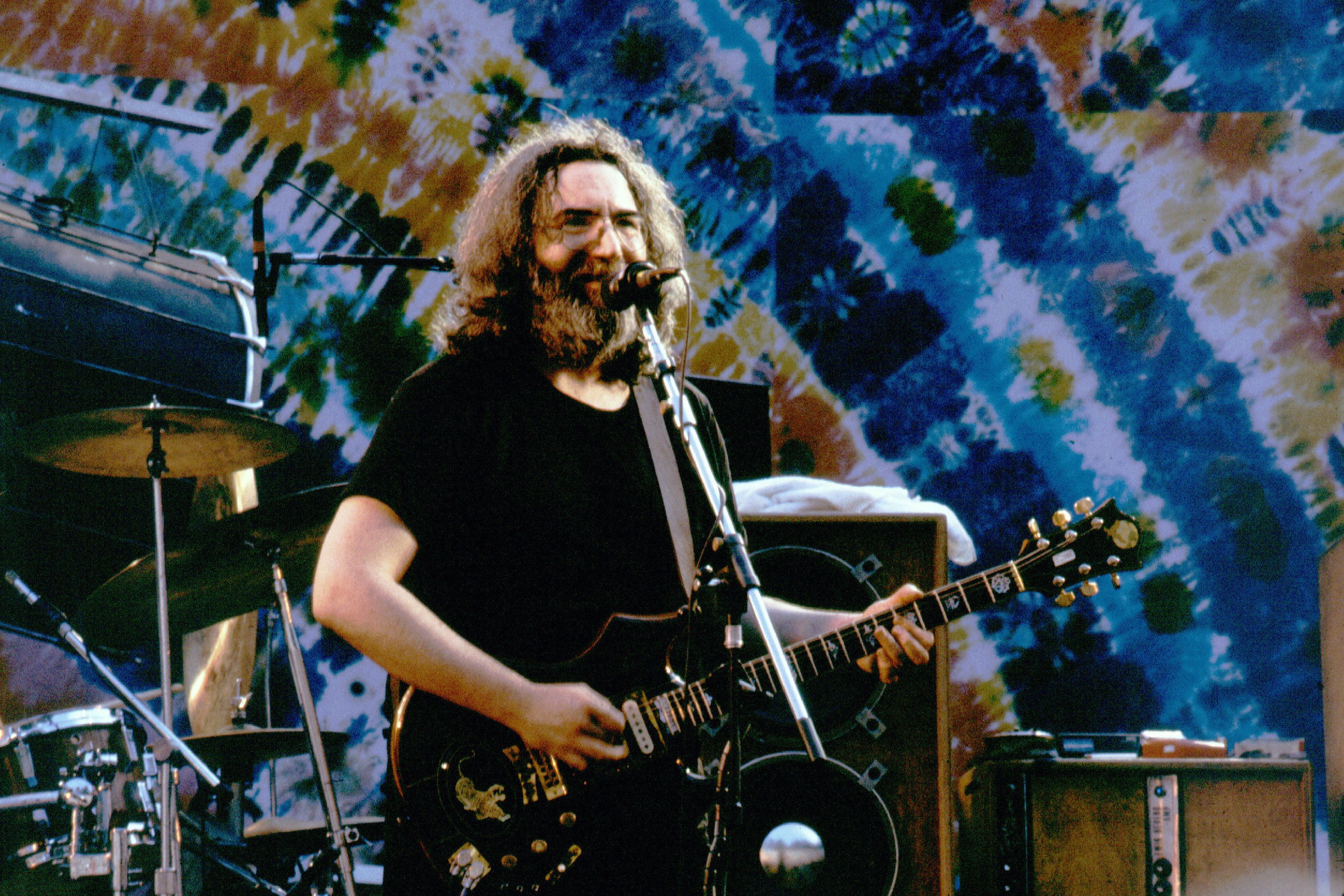
5. The Grateful Dead
The Tour: 1967-1995
Ken Kesey’s 1966 Acid Tests in San Francisco.
Europe 1972.
The Egyptian Pyramids, 1978.
Like my best friend’s T-shirt said, reeking of sativa and inevitability: GRATEFUL DEAD ON THE MOON. But when you’re On Tour, it’s not where you’re at—it’s that you haven’t really been home in a few years. Except for how you’d walk into a hockey rink in a town called Whatever and some complete stranger who you, like, totally recognized would give you a hug and say, “Welcome home.” The Grateful Dead were the counterculture’s house band—or at least the segment of it less stoked about marching on Washington than about exploring new social relations under the rubric of “freedom” and new states of mind flatteringly dubbed “higher consciousness.” A show was an extended and sometimes aimless exploration of what higher consciousness might sound like (at least to the ears of middle-class white youths). And for freedom, or an incredible simulation, we had the Tour—the house band leaving the house and taking the culture with it. A slogan became ani ternary: Turn on, Tune in, Drop out.And you could just keep dropping. Led by Jerry Garcia, genius guitarist/tawdry messiah, the band’s improvisational musicology and fat songbook promised a new show (and, for the obsessives, a new tape) every night for 28 years. And the crowd’s religious cohesion promised a movable feast. Some kids rode trust funds, some slaved for the Man during downtimes. Plenty fell into the Tour’s self-sustaining shadow economy, hawking tie-dyes here, cheese’n’sprouts sandwiches there, and shuffling less-legal items in the parking lots of each Whateversville. It was, as a friend once observed, “a perceptual Disneyland for drug addicts.” For many on the outside, the concerts—with their ritualized spirituality and tediously brilliant “drums/space” jams—became a kind of weird cultural relic, like Broadway musicals or theosophy. “We used to joke about incorporating as a religion,” says singer/guitarist Bob Weir. But even after a few dead keyboardists, more than a few run-ins with the law, millions of dollars (by the ’90s, they were one of the world’s highest-grossing touring acts), and great disillusionment on the part of band and fans alike, there was no packing it in. “The crowd’s idolatry had gotten cancerous,” says Weir. “It was hardest on Jerry. He was drugged out and half-asleep—but we could still crank it out.” Finally, nothing could stop the Tour short of Garcia’s heroin-abetted death in 1995.But not even that could stop the underlying ideas. Dedicating your life to following a band around may still seem silly, but it’s also found a permanent spot in the flowchart of teen decision-making, part of the psychic economy that’s kept Phish and Dave Mathews in motion. But mostly, the Tour—no less than Elvis or punk—was a big idea genuinely rooted in its cultural moment: rock’s impossible and inevitably fucked pass at utopian group dynamics (since bequeathed to the ravers). Finally, there was no revolution, no escape from same-shit-different-day. But it always seemed like that’s what the band, and the crowd, kept blindingly, blissfully running after—from town to town, whatever to whatever. —JOSHUA CLOVER
6. Various Artists
Alan Freed’s rock’n’roll package tours, 1952-1958
THE MOST TERRIBLE BALL OF THEM ALL! Screamed posters for the Moondog Coronation Ball in spring 1952. More than 20,000 teens gathered outside the Cleveland Arena for a show headlined by now-forgotten R&B performers Paul “Hucklebuck” Williams and Tiny Grimes. The arena seated only 10,000, so police shut the event down before it started—and all hell broke loose. The result, according to the late critic Robert Palmer: “The first rock and roll concert was also the occasion of the first rock and roll riot.”
The ball’s 30-year-old mastermind, local DJ and promoter Alan Freed, soon appropriated the name “rock’n’roll”—an old blues double entendre for fucking. The sound wasn’t new, but the audience was: On radio, stage, and TV, Freed took gutbucket, juke-joint R&B and brought it to postwar white youth starved for sexual release. “They had ten years of corners and undanceable music,” explained Freed, who was promoting what The New York Times called “an epidemic hysteria.” This cut deeper than the idol worship of Sinatra or, later, Elvis, because it wasn’t about celebrity but strictly about the music: a raw underground sound that Freed called the “Big Beat.” The hysteria was real.
By the mid-’50s, Freed was based in New York City, and his package tours had become the stuff of instant legend, featuring larger casts of performers, black and white, and bigger melees, packing large halls and skating rinks. This was cultural anarchy long before the Sex Pistols, as racially mixed audiences worked themselves into a collective frenzy. In ’58 came Freed’s Big Beat extravaganza—12 acts, including Chuck Berry and Jerry Lee Lewis, barnstorming 38 cities. It imploded in the 7,000-seat Boston Arena, where rival gangs converged, fights erupted, and a sailor was stabbed. “The absolute fear on Chuck Berry’s face told you it wasn’t ‘normal’ crowd rowdiness,” recalls George Moonoogian, then a high school senior who was near the tour fell apart. But the revolution was on. —EDDIE DEAN
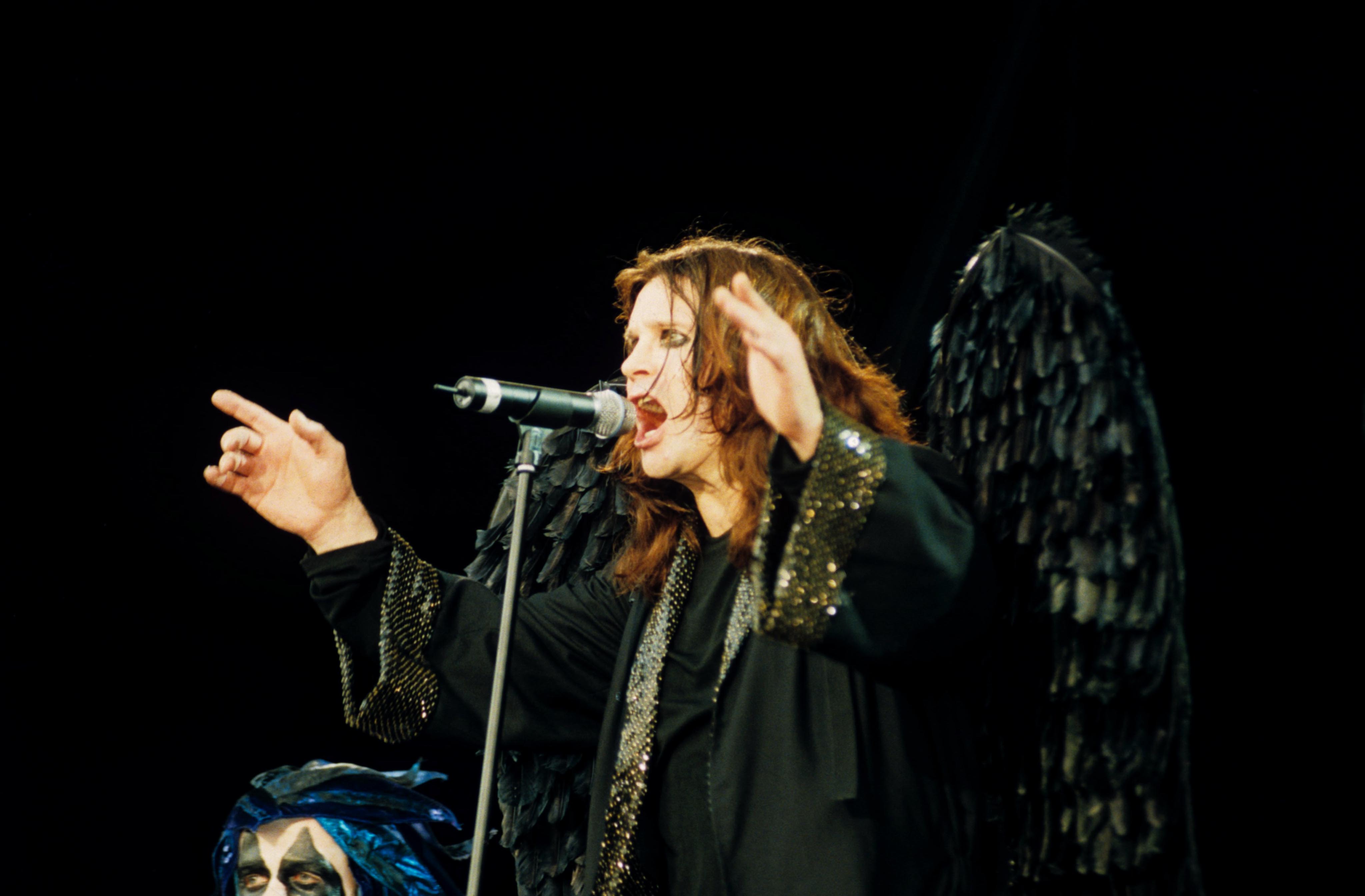
7. Various Artists
Ozzfest, 1998
The traveling circus of bolted youth and nü metal known as Ozzfest arose from the ashes of a less-than-triumphant meeting between Ozzy and Sharon Osbourne and a group of Lollapalooza organizers in 1995. Despite the fact that almost every heavy band of the ’90s owed a debt of influence to Black Sabbath, the Lollapalooza, folks were unwilling, according to Mrs. Osbourne, to give Ozzy a slot on their main stage. So the Osbournes, as is their way, said, “Fuck you,” and started their own touring extravaganza, dedicated to Ozzy, Sabbath, and the gnarlier of their musical heirs.
By 1997, Ozzfest was a smash success, raking in $13 million. Nearly every band on the ’98 main-stage lineup (Ozzy, Megadeath, Tool, and Soulfly) spoke to the warty souls who weren’t feeling alt-rock or Eddie Vedder‘s pain. At the time, Ozzy said, “What I want to do, especially on the second stage, is give an unknown band a springboard, a band that wouldn’t normally get the opportunity to play in front of that many people. I love passing the torch to the next generation.” but the Ozzmeister probably didn’t expect to pass the torch, or even a Mag-Lite, to a doughy dork in a red backward baseball cap.
Nevertheless, Limp Bizkit stole Ozzfest ’98. It made sense, too: Durst and Co. merely took the white-male rage that has always simmered in hard guitar music from Sabbath to Sepultura and refried it with stiffened funk. Ozzfest ’98 launched Bizkit and sealed the deal between old-school metal and nü-school rapcore. As a result, Ozzfest evolved into a transgenerational showcase and a proving ground for hard rockers. While the tour has helped polarize music into metal and pop-lite camps, it’s still a powerful imprimatur: You’re not really heavy until you’ve eaten at Ozzy’s table. —PAT BLASHILL
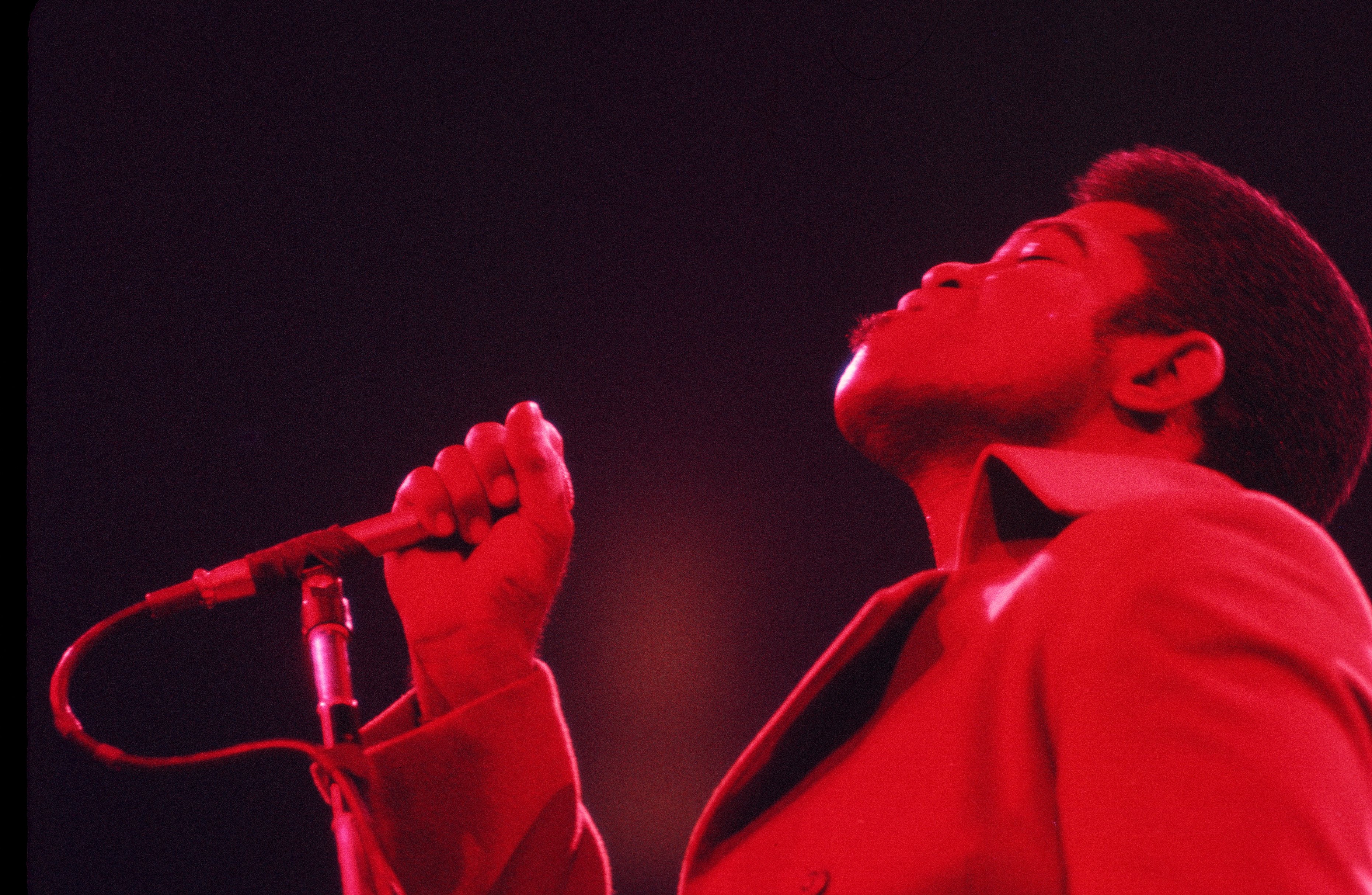
8. James Brown
World tour, 1968
It wasn’t a tour per se—with J.B. in the late ’60s, it was more a free-form marathon of history-making, inescapably political funk blitzes. In April, he performed in Africa for the first time, in Ivory Coast, returning for a show at the Boston Garden on what proved to be the day after Martin Luther King Jr.’s assassination. The city mandarins, hoping to keep potential rioters home, bought out the gate in exchange for permission to broadcast the show on public TV; James burned, and Beantown didn’t. In June he was in Saigon, turning it loose for U.S. troops in 100-plus degree heat while drum-gunner Clyde Stubblefield and distant artillery provided fills. He returned home to play for 48,000 at Yankee Stadium. Before the summer was over, the hardest-working man in showbiz would be called an Uncle Tom for releasing the proto-rap “America Is My Home” and a militant agitator for releasing “Say It Loud—I’m Black and I’m Proud.” On the former, he reflected in his autobiography, The Godfather of Soul, “America is my home.” On the latter: “Really, if you listen to it, it sounds like a children’s song.” —WILL HERMES
9. Black Flag
Various tours of duty, 1981-1982
Greg Ginn is bleeding again. The Black Flag guitarist is clawing wildly at his strings and screwing up his face like he’s caught in a centrifuge. The drummer is pounding away with the disciplined fury of a military pit bull, and he’s got the name to match: Robo. The Mohawked Chuck Dukowski is screaming at the audience and swinging his bass like a baseball bat. Meanwhile, “singer” Henry Rollins is alternately barking, lunging at the punks in his first row, grinding his hips like a hardcore Jim Morrison, and grinning maniacally like a genuine Charles Manson.
This was Black Flag circa 1981 in Anytown, USA, featuring new member Rollins, a former Flag fanatic who was asked to be frontman because previous singer Dez Cadena’s voice couldn’t hold up on grueling tours. Flag’s dogged assault on America in the early Reagan years refined the do-it-yourself ethic that became central to hardcore and, later, indie and alternative music. Black Flag taught by example, showing nascent punks that DIY meant hard work and ingenuity; putting up posters, making barely functioning vans traverse mountains, and, most important, releasing their own records, which Ginn did through his heroic SST imprint. “Black Flag was a lot of hungry times, a lot of missed meals, sleeping in your wet clothes in the back of the bans,” Henry Rollins told me in 1994. “Imagine living in Das Boot for five years.”
Along the way, the band became hardcore’s Mothership. The talked their way into rock clubs that otherwise wouldn’t have taken a chance on punk rock. (Many of these became outposts in a national network of venues that were still welcoming bands like Nirvana ten years later.) Black Flag often toured with other SST artists, exposing fans to top bands like the Minutemen and the Meat Puppets. But for Ginn, Flag’s cross-country sorties were also part of a personal mission. “I thought Black Flag should be the biggest thin in the world,” he says today. “And I thought everyone should be subjected to us, whether they wanted it or not.” —PAT BLASHILL
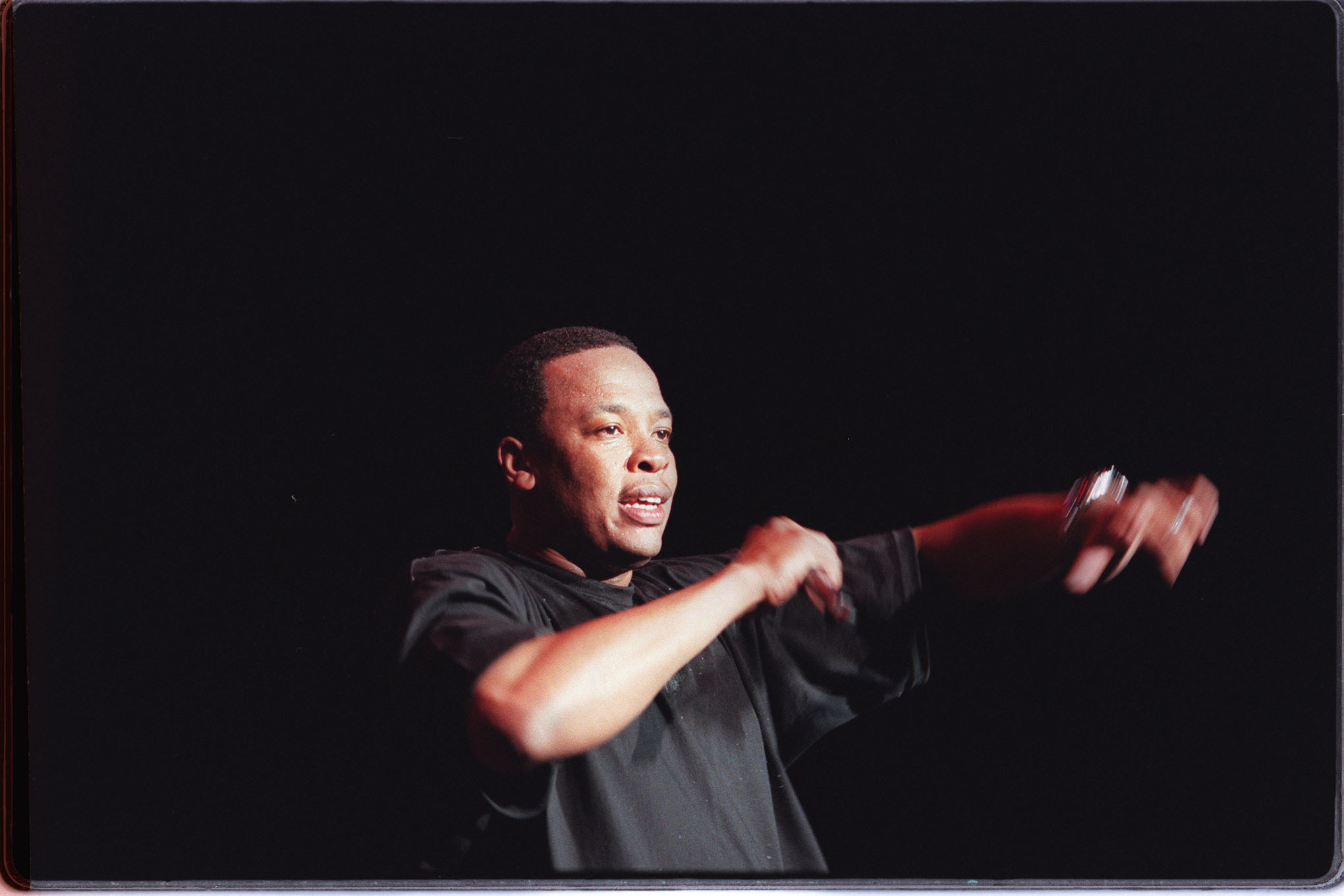
10. Various Artists
Up in Smoke tour, 2000
Before Fresh Fest rolled out to rock the nationwide party with a crew of non-sucker East-coast MCs like Run-D.M.C., Whodini, the Fat Boys, and Kurtis Blow back in the fall of 1984, hip-hop jams were still happening mostly in inner-city schoolyards. After 27 gigs, Fresh Fest I grossed $3.5 million; mostly black audiences peacefully filled arenas just to get a glimpse of the groups they’d been trading on homemade mix tapes. In 1986 there was Raising Hell; by 1988, a handful of national rap tours were bumping around the country, but random outbreaks of violence caused a severe live hip-hop drought that would last more than a decade.
Then along came last year’s boomin’ Up in Smoke tour, the by-produced of a left-coast thunderstorm that reasserted Cali dominance in the face of Ruff Ryders and Cash Money. Scores of white, Napster-addled kids came in peace to see TQ and nate Dogg, the hip-hop crooners; Warren G, the G-funk marshall; Kurupt, the gangbanger, Xzibit, the hip-hop superhero; Ice Cube, the gracefully graying gangsta; Snoop, the top Dogg; Dre, the good doctor; and a lighter-skinned brotha from Michigan called Eminem—Trailer Park Nation’s very own Rakim. “If you bought a ticket, come in and enjoy the show,” Dre said. “I don’t give a fuck what color you are out there.”
And what a show it was. Eminem’s run was supported by two 20-foot inflatable hands that flew the bird definitely. But it was headliner Dre’s entry that made Up in Smoke: a mini-movie starring Dre and Snoop in which the devastating duo find themselves in the thick of a liquor store shoot-out. After the last of the punks is rounded up, the Dr. and the Dogg—with guns drawn—look out into a sea of bloodthirsty fans and ask: Should we blast him? After a flash, the Compton/Long Beach connection strolls out of the onstage liquor store facade and gets busy. Art imitating life imitating art? The rest of the house came in through the metal detectors—very OG. —SACHA JENKINS

